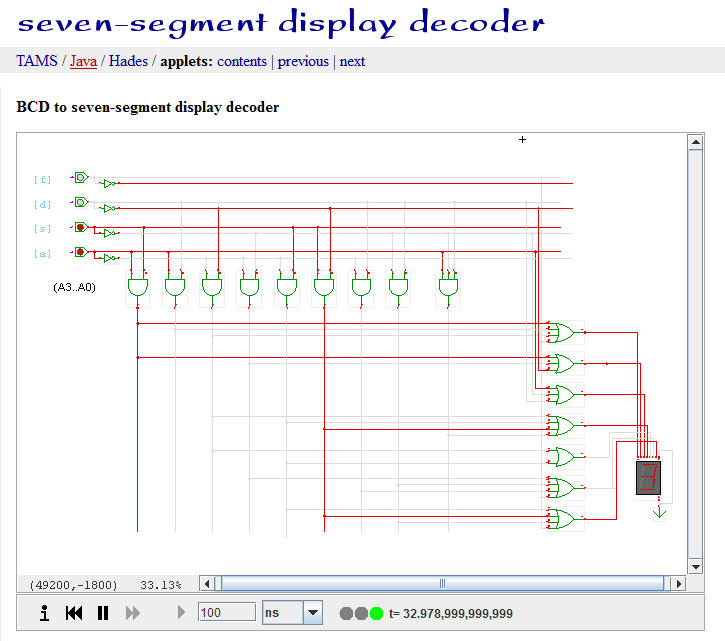|
HADES: JAVA applet to simulate circuits |
||
HADES : The Hamburg Design System (Dept. Computer Science, Univ. of Hamburg) is a framework for interactive simulation. The software consists of a graphical editor, the discrete-event based simulation engine, libraries of simulation components, a design and library browser, and tools like waveform viewer and scripting shell. Written in Java, the software is fully object-oriented and can be used as an applet embedded in web-pages. Read this sheet to unlock the Java Runtime Environment of your computer.
This bellow is an example of how works a BCD to 7-segment decoder. As you see, its internal architecture is an irregular structure where every output function is composed of Buffer-NOT-AND-OR, thus, the SoP minimised equations.
 |
Fig. 1. Example of a HADES simulation of a classic BCD to 7-seg decoder. |
Note: to use HADES software Java runtime environment has to be installed in your computer. Then the address "https://tams.informatik.uni-hamburg.de" must be added to the security tap at Java (32bit) Control Panel
There are two ways to use HADES:
1) Interactivelly in the internet browse using Microsoft Internet Explorer (run the Java applet).
2) Using the editor locally and drawing your own circuits or using examples. From downloads, get and run the Hades software archive (JAR-format) from a local folder like: L\CSD\HADES




